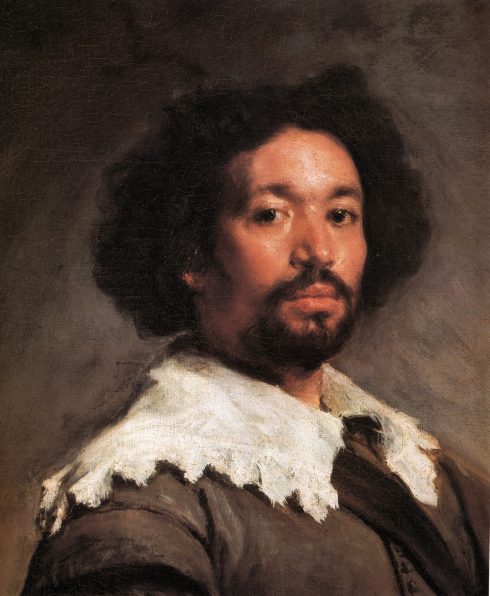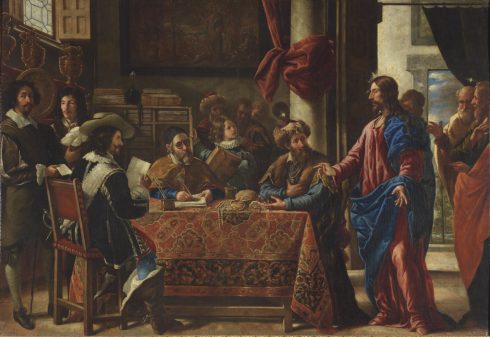DIEGO Velázquez (1599-1660) needs no introduction. Perhaps the best-known painter in Spain’s Golden Age, Velázquez’s paintings became the paragon of excellence for the great Spanish realist and impressionist painters that followed (think: Pablo Picasso, Joan Miró, Salvador Dali, etc.).
Recently, Velázquez has been on the minds of art historians and museum curators for reasons you might not expect.
Of late, on-going discussions by those in the art community argue that Velázquez’s legacy has brought a new dimension to the world of art. Allow me to explain…
Early in his career, Velázquez had a modest, somewhat regional, reputation as a painter. That changed when the Flemish great Peter Paul Rubens, who while visiting Madrid, recognised the young man’s potential.
He encouraged Diego to travel to Italy to paint, study and learn from the great masters. In 1629 he left Malaga for Genoa, entrusted by King Philip to continue to paint but also to procure paintings and sculptures for the royal palaces.
Traveling with him was a personal entourage of other artists, assistants, and a Morisco slave named Juan de Pareja.

Even after the expulsion of Moors (1492), Spain remained a muti-racial and highly stratified society but artists were known to have slaves in their workshops.
To some extent, Velázquez’s subject matter while in Rome reflected this diversity. With his brilliant use of a loose (almost impressionistic) style of brushwork, vivid colors, shading, and light, Velazquez brought to life a certain ‘vitality’ to darker-skinned subjects.
During his stay in Rome, Velázquez’s painting of his slave, The Portrait of Juan de Pareja was exhibited at the Pantheon (1650) where it not only was popularly received, it ‘electrified the city of Rome’.
As one biographer noted: “The Portrait of Juan de Pareja was widely applauded by all the painters from different countries who said the other pictures were ‘art’ but Velázquez’s portrait was ‘truth’.
Very little is known of Juan de Pareja’s background. He was born around 1609 in Antequera and came to Velazquez either by purchase, gift, or inheritance.
Pareja was believed to be born of an African slave and white Spaniard. Early on, as a member of Velazquez’s household and workshop, he demonstrated knowledge that went beyond merely mixing paints, cleaning brushes and setting up easels.

Rather, he evolved into not only a dedicated apprentice but as an emulator of the masters around him – especially in his time in Rome.
There he developed stylistically into an artist in his own right and was prolific in his painting. One critic described his bold brushwork as ‘more of a sign of courage rather than confidence’. Diego Velazquez would ultimately free him by ‘manumission’ or formal emancipation from slavery.
Juan de Pareja had entered Rome an enslaved Morisco but left a free man with an accomplished reputation.
Flash forward nearly 300 years to the world of art in New York City. In 1926, The Carnegie Corporation purchased a private art collection from a Puerto Rican man of mixed-race named Arturo Schomburg.
Schomburg, a historian, writer, and activist, often collected ‘slave narratives’ – evidence of what he called ‘hidden black achievement’.
Known as part of an intellectual revival of African arts called the Harlem Renaissance Movement, the Schomburg/Carnegie collection is housed today in the New York Public Library. Schomburg however was not finished with his efforts. Using the proceeds from his sale to the Carnegie Corp., he traveled to Spain to retrieve many of the works of Juan de Pareja.
At the time of this writing, much of Schomburg’s collection pertaining to the works of Pareja is on display at the New York Metropolitan Museum of Art.
The exhibition offers an unprecedented look at the life and times and artistic achievements of Juan de Pareja. The Met hopes to better position the voices of enslaved people through art.
The presentation examines ways in which ‘enslaved art’ and a multiracial society are linked to Spain’s Golden Age.
The infamous Velazquez’s The Portrait of Juan de Pareja is contextualized by the presence of much of Pareja’s works. Even the original historical document which ‘freed’ Velasquez’s dedicated assistant is on display.
These works, combined with Velazquez’s Portrait of Juan de Pareja serve as a thread connecting 17th Century Art with 20th Century Art.
DID YOU KNOW?
— I, Juan de Pareja is an award -winning novel by American writer Elizabeth Borton de Treviño. In 1966 the fictionalized novel won the prestigious Newbery Medal for excellence in children’s literature.
— “Decolonization of art”– the process of freeing institutions (e.g., museums, exhibitions, etc.) from the cultural and social effects of Euro-colonial art, is receiving increased attention. Many museums are issuing statements of solidarity hoping to offer greater access to the art of colonized people. For a fascinating video on this subject matter with associate curator at The Met , Maia Jessup Nuku, go to: https//YouTube/SBfGRVFFczk .
— Not all Pareja’s work is presently in New York. His classic The Calling of Saint Matthew can be viewed at the Museo del Prado in Madrid. At the Museu de Belles Arts in Valencia, the Portrait of the Architect José Ratés Dalmau can be viewed.
— The Met’s Exhibit in New York City runs until July 16th,2023.
READ MORE:
- LONG READ: Jack Gaioni reveals the fascinating story of Lola Montez, the fake Spanish dirty dancer who captured a…
- Ladies man: Spanish free-thinker Luis Vives was the world’s first Renaissance Man and championed education for all women back…
- Life is Easy with Eyes Closed… (But opened for John Lennon in Spain’s Cabo de Gata!)











